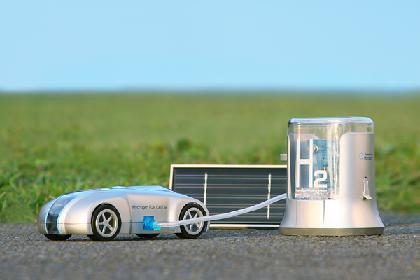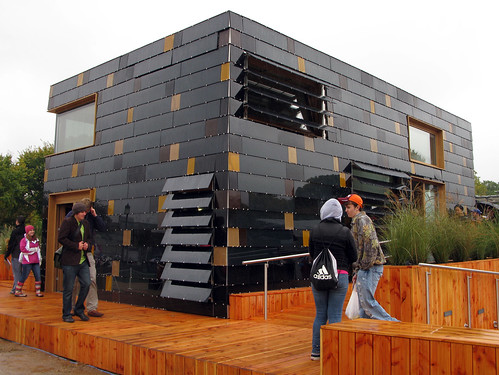GROWING FOREST COVER IN UTTAR PRADESH
| ||
 The history of exploitation and destruction of forests in India goes back to the British period when the forests wealth were consumed for commercial gains. The trend continued even after independence and the forests were used not for imperative economic growth but for other various reasons. The denudation of forest land, however, had now slowed down in recent years despite human and commercial pressures due to efforts made by various agencies. The Himalayan region is the most threatened area in India. The growing population, one of the main factors for deforestation, increases the need of land for more food production to feed the growing number of people causing environmental degradation. The history of exploitation and destruction of forests in India goes back to the British period when the forests wealth were consumed for commercial gains. The trend continued even after independence and the forests were used not for imperative economic growth but for other various reasons. The denudation of forest land, however, had now slowed down in recent years despite human and commercial pressures due to efforts made by various agencies. The Himalayan region is the most threatened area in India. The growing population, one of the main factors for deforestation, increases the need of land for more food production to feed the growing number of people causing environmental degradation. After a separate state of Uttarakhand was carved out of Uttar Pradesh, the forest cover of the state had decreased by 40 percent. Uttar Pradesh's forest cover, which stood at 14,127 square km in 2007, has gone up to 14,341 sq km, as per the survey carried out in November 2009. The survey has also recorded a substantial rise in the density of the forest cover, thanks to campaigns launched by department of Social Forestry and Department of Forest. In terms of percentage, this may not appear really great, yet it reflects a positive trend. The green cover in the state has registered marginal increase from 5.86 percent to 5.95 percent of the state's total area. While the national average of green cover is 21 percent. Even though the rise is marginal, it is quite significant considering the fact that green cover is gradually going down in most parts of the country due to immense population pressure. After a separate state of Uttarakhand was carved out of Uttar Pradesh, the forest cover of the state had decreased by 40 percent. Uttar Pradesh's forest cover, which stood at 14,127 square km in 2007, has gone up to 14,341 sq km, as per the survey carried out in November 2009. The survey has also recorded a substantial rise in the density of the forest cover, thanks to campaigns launched by department of Social Forestry and Department of Forest. In terms of percentage, this may not appear really great, yet it reflects a positive trend. The green cover in the state has registered marginal increase from 5.86 percent to 5.95 percent of the state's total area. While the national average of green cover is 21 percent. Even though the rise is marginal, it is quite significant considering the fact that green cover is gradually going down in most parts of the country due to immense population pressure.
Worried by the denudation of vast Himalayan range and elsewhere, the Union Government chalked out an ambitious plan of bringing 33% of its land under green cover. However, there is a lot to be done to achieve this target as the requirement of land for Human Settlement is growing. There is not much wasteland available for residential or Industrial purposes either. However, the Minister for Environment and Forests, Mr. Jairam Ramesh terms the target as 'unrealistic', "...it is not realistic given the population pressure and the pressure for development." Addressing Green Landscape Summit-2011 organised by CII, he said, "The target is unrealistic in a country like India where the population is 1.2 billion and set to become 1.6 billion by 2040. With the population and development pressure in our country, to expect India to suddenly grow a green cover from the present 21% to 33% is totally unrealistic."
The Union Government has recently approved the National Mission for Green Indiato
increase forest cover in the country. This is one of the eight missions under India's National Action Plan on Climate Change.The objective of this Mission is not only to increase the quantity but also the quality of over 10 million hectares of forest area. It aims to double the afforestation. The increased forest cover will act as a carbon sink to absorb an additional 43 million tonnes of green house gases every year. This will go a long way in addressing the impact of climate change. The Mission is not just limited to increasing plantations, but also focuses on restoring diverse ecosystems.
Deforestation for different purposes, poaching and illegal cutting of trees are the major cause of declining forest cover. Not only it is effecting the climate change, the deforestation has snatched the living of wildlife. Many cases of Panther and other wildlife wandering into human habitat have come to light during past years. Last year three panthers strayed from Pilibhit, Sohgibarwa (Mahrajganj) and Gorakhpur forest areas and threatened human lives. At least three people died and half a dozen other injured including one forest official. Several Neelgai , Deer and wolves have escaped from sanctuaries and reserved forests in Terai areas of Uttar Pradesh in recent past.
The ecosystem of the forests is depleting very fast. With food chain broken, the wildlife comes to Human Habitations in search of food. It has become a vicious circle. The climate change is causing depletion of forest resources and depletion of forest resources is causing climate change. With human habitation coming closer to the forests due to population pressure, they are becoming easy prey to wild animals. The population in turn fells more tree and destroy forest vegetation for residential purposes.
Recently, the government of India, state governments and judiciary have come up with the plan of saving forests. While the National Mission for Green India aims at increasing the forest cover to 33 percent, the judiciary has given land rights to the tribes living in forests.
These tribes like "Van-Tangia" in eastern Uttar Pradesh live in the forest and earn their living from selling the by-products of forest like leaves, bark and dry grass. It is noteworthy that they never fell a tree for fuel wood or otherwise rather they strive for saving trees as they pray the trees like God. If promoted, they can become saviour of forest and help in social forestry programme. Vast range of natural forest occupies the Himalayan foothills of Uttar Pradesh. These need to be protected if one needs to slow down the effects of Climate change.
Uttar Pradesh has a long way to cover if it is to reach somewhere near the national average of present 21 percent greenery. The increase in forest cover have been recorded in the districts of Hardoi, Kheri, Pithoragarh, Saharanpur which is on account of the plantations taken 4 to 5 years earlier and also due to effective protection measures. Mass public awareness is needed to increase the forest cover and to save wildlife.
|

























